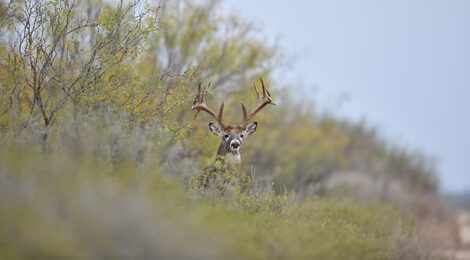
Winter Nutrition Preparation
With ideal conditions bucks might recoup weight expended during the rut, but may not maximize antler growth or fortify the does’ ability to lactate following parturition during summer months.
Story and photography by Bob Zaiglin
As a golden ray of sunshine gilded the low-lying vegetation below the mesquite-lined horizon, a yearling buck appeared at the brush line, paralleling a sendero. Hesitating only momentarily, the buck proceeded to walk down the sendero, dropping its head frequently to the ground, searching for the few remaining kernels of corn distributed by hunters throughout the hunting season. Accustomed to the distribution of the palatable feed drew the deer to the sendero daily for days following the hunting season before it realized that it was now nutritionally on its own as the free handout was over.
In their attempt to attract deer out into the open in order to estimate age and antler size, Texas sportsmen distribute tons of corn that is a highly desirable feed source to deer. Once the hunting season is over, however, its distribution is abruptly curtailed, forcing deer to go cold turkey throughout the rest of the winter period. Without this source of carbohydrate, they resort to native vegetation, particularly prickly pear cactus, which is another source of energy. I refer to it as a deer’s candy bar, but pear is limited in crude protein, which is important in preparation of antlerogenesis. With ideal range conditions, bucks can rapidly recoup weight expended during the breeding season, but the nutritional value of the vegetation is not always adequate enough to maximize antler growth and more importantly nutritionally fortify the does’ ability to lactate following parturition during the summer months when the vegetation yields minimal amounts of crude protein.
************************************************************************
To read more, click here to SUBSCRIBE







